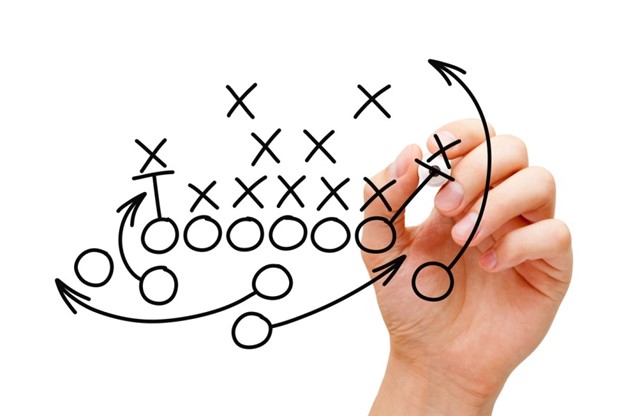When I reflect back on the sales coaching method that I found to be most effective, it really is quite simple. Not surprisingly, it always comes down to the fundamentals. The first thing is activity. There is a baseline of consistent outbound sales activity that your sellers need to conduct in order to build an adequate sales pipeline.
And there isn’t a sales magic wand that can make up for the lack of requisite sales activity being conducted by your sellers. And yes, we should expect our Marketing partners to help us as sellers in terms of building our sales pipelines through various outbound education, awareness and demand generation programs. But I always asked my sellers to take full responsibility for building their own sales pipelines. Too many sellers get stuck in the perennial finger pointing lead generation blame game with their Marketing team. And there are no winners in that game… only losers.
Smart sales managers figure out. what that consistent baseline of outbound sales activity is necessary to build a healthy sales pipeline. Good sales leaders then walk their sellers through the underlying sales math necessary including average conversion rates, sales cycle lengths and deal sizes to achieve quota. Given that only 57% of B2B sellers are attaining quota as a whole, my sense is that this sales manager with their sellers dynamic is not happening much.
The second fundamental thing that smart sales coaches focus on is quality. By quality, I mean the quality of the sales activities that the seller is responsible for consistently conducting. Are your sellers personalizing every outbound email? Are your sellers doing research on the key issues and challenges that your customers are facing at an industry, company and personal job function level?
Have your sellers thoughtfully prepared discovery questions in advance of a customer conversation? Do the discovery questions that your sellers ask make sense to the different customer stakeholders? Are your sellers spell/grammar checking every email prior to sending? Based on the cold emails and voice mails that I receive daily, this is not happening often enough.
There is an optimal intersection between sales activity (aka quantity) and quality necessary to achieve sales success. For example, if you ask your sellers to send out 100+ emails or make 150+ outbound sales calls per day, do so knowing full well that they will be low quality emails/calls (e.g., generic and not personalized) with a corresponding very low response rate. By the same token, if you ask your sellers to conduct hours of research to personalize every new outbound email or call, you will see a corresponding higher response rate due to the higher activity quality quotient… but it may actually be negatively offset by the much lower quantity of emails/calls resulting in an inadequate sales pipeline.
The final factor to consider as a sales coach is that every seller is unique. They all bring different strengths and weaknesses to the table. Your fundamental job as a sales coach is to understand what their strengths and weaknesses are. Help them by providing clear guidance as to how they can best leverage their strengths in their selling activities. And help coach them up and develop the sales skills that they are weak in.
At the end of the day, great sales leaders don’t just present a sales compensation plan and quota to their sellers. Bad sales leaders do this. Strong sales leaders sit down with their sellers and collaboratively build out a sales success plan. Both for the company and the seller. The key is that the seller has to understand the underlying sales math and be bought into the sales success plan based on their own strengths and weaknesses.
Cautionary note: You can actually have sellers that do too much outbound sales activity. I once had a great sales rep that worked for me that was a prospecting machine. He was using headphones before it was even a thing for sellers to use. He would literally block out on his calendar hours of time every day to prospect. He had a funny Do Not Disturb sign on his cubicle when he was prospecting. And if he had a week where he was on the road doing customer sales calls, he would make up for those lost prospecting hours the next week.
The problem that arose was that while he had the healthiest sales pipeline in the company by far… he was working too many deals at once and his forecast deals slipped often. We devised a model where he would prospect like crazy the first month of every quarter. Then he would schedule advanced stage customer sales calls the second month of every quarter. Then we created a weighted sales forecast formula whereby we’d multiply the likelihood that the deal would close in that quarter by the deal size. That math informed us of which opportunities we’d invest our time in closing for the third month of every quarter.
We solved the forecast deal slippage problem and he went on to become the #1 seller in the whole company for many years in a row. He’s now a very successful CRO who still obsesses over prospecting and the underlying sales math model. There is this notion of a seller band width issue. If you have sellers trying to work too many sales opportunities at the same time, you’ll lose opportunities that you should have won because the seller does not have enough time to properly work the opportunity. And you’ll see lots of forecast opportunity slippages due to the same reason. Finally, you’ll experience too many opportunities ending up in the dreaded “No Decision” state because the seller did not convince the customer of your value proposition.
Good selling!

